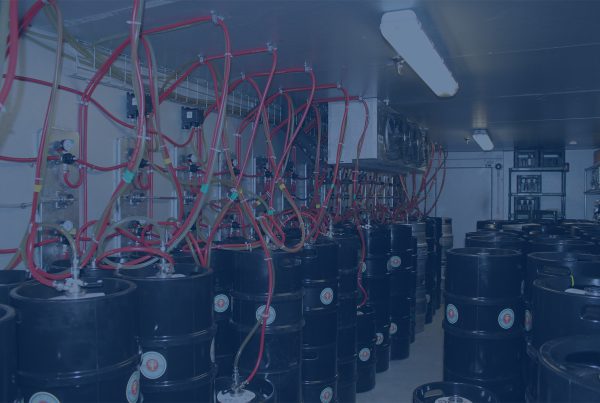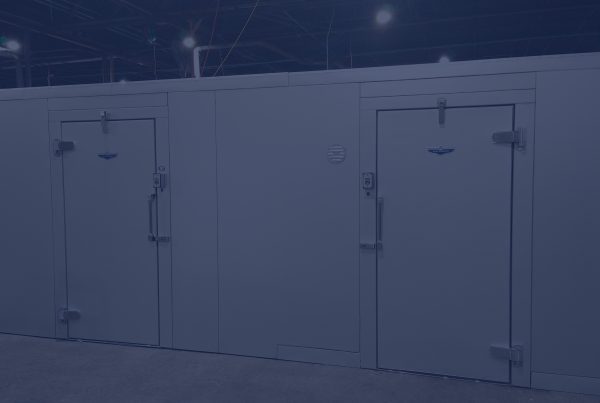Location is Everything
Choosing the location of your walk-in cooler to be indoors or outdoors is a very important decision. Once the walk-in cooler or freezer is installed it will be a large hassle and waste of money if you change your the location. Here are some considerations to take into account before making your decision.

Indoor walk-ins can take up precious usable area. Find the best location for your walk-in cooler!
Space Requirements – Whether your location is indoors or outdoors you will have to account for the amount of space needed. For indoor walk-ins you need at least 6 inches of airspace above the walk-in and 2 inches on all sides for proper airflow. An indoor condensing unit needs to be easily accessible for cleaning and repairs and should have plenty of airspace all around it. Some customers request hatches in their walk-in’s ceiling to easily access top-mount units. You may consider an outdoor walk-in if your indoor space is limited or if you’d like room to grow in the future. Be sure your property is large enough to house the size of outdoor walk-in you require.

Outdoor walk-in butted against the building.
Butted vs Freestanding – A freestanding walk-in will be a separate structure and have a door that opens to the outside. A butted walk-in will usually have a door opening to the inside of your building. The panels of a butted walk-in will be butted up against the building on one or more sides. Butted walk-ins will not require a drip cap and the door and its hardware will last longer since it’s not exposed to the elements. Freestanding units should be equipped with locks as they are susceptible to theft.
Condensing Unit Location – If you own a restaurant or any other consumer-based business, you don’t want a loud refrigeration unit ruining the ambiance. There are refrigeration units designed to be quiet, but most of the time a remote refrigeration unit is your best option. A remote unit allows you to locate your condensing unit outside the building, even if your walk-in is inside. Condensing units also give off heat which is not optimal when you’re trying to cool your building. Keep refrigeration units away from any heat sources such as vents, fryers, or ovens and anything that can get the unit dirty or greasy.
Ambient Temperature – Getting the correct average ambient temperature is important for refrigeration sizing but it is also an important consideration for operating costs. Outdoor walk-ins and condensing units will benefit from colder climates and cost less to run than if they were using the warmer inside air.
Wear & Tear – Modern panels have utilize metals that are resistant to rust. However, rust can form if the rust-resistant coating is badly scratched. Panel gaskets and door hardware are more likely to become damaged when exposed to the elements. Leaky panel gaskets and lead to icing within the walk-in and moisture accumulation in the panels. Panel insulation will wear out sooner due to exposure moisture, extreme heat and extreme cold.
Cost – The cost of an outdoor unit will generally be more than an indoor unit. Outdoor units require rain roofs (or covering by an awning) and an outdoor condensing unit with weather protection and winter controls. For outdoor walk-ins you may need to pour a concrete pad to so it can be installed on even ground. If you are in an area that gets a lot of snow, you may consider getting a reinforced ceiling to prevent any damage from heavy snowfalls.
When deciding between an indoor or outdoor walk-in cooler or freezer, be sure to list out the pros and cons of each and choose carefully.




A roof mounted hatch for access…..great idea!
How do you keep an outdoor cooler from freezing when it’s really cold outside in Cortland, NY?
It does not take much heat to keep a cooler above freezing. A small heat lamp or even just using a 100 Watt bulb left on in the cooler will usually keep it above freezing. If you do that you should make sure you remove the globe as it is not rated for 100 Watt bulbs. One other thing that might be a good idea is to get a heater wire kit for the door to keep it from freezing shut.